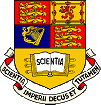

1. 1-Morpholinocyclohexene
In a 500 ml flask, place a mixture of cyclohexanone (29.4 g), morpholine (31.4 g) and p-toluenesulphonic acid (0.3 g) in toluene (100 ml). Fit the flask with a Dean-Stark separator and heat the mixture to reflux. The theoretical amount of water (5.4 ml) takes about 2 h to separate, after which the residue may be distilled, first at atmospheric pressure to remove toluene and then under vacuum. The enamine has b.p. 118-120o/10 mm. Record yield, nmr and ir spectra.
Note The product is sensitive to moisture. If it cannot be used immediately, store it in the refrigerator. It may become yellow on storing, but this should be ignored.
2. Octal-2-ones
Fit a 1 litre three-necked flask with a stirrer, a condenser and a dropping funnel. Place in it a solution of 1-morpholino- cyclohexene (51 g) in dry dioxane (300 ml). Add, with stirring, methylvinylketone [redistilled immediately before use] (22.4 g) over about thirty minutes. Reflux the mixture for 4 h, add water (400 ml) and reflux for a further 10-12 h. To the cooled solution, add water (500 ml) and extract the mixture with diethyl ether (4 x 100 ml). Wash the combined ether extracts with 3 N hydrochloric acid (3 x 100 ml) then with saturated sodium bicarbonate solution (2 x 60 ml), once with water and once with saturated sodium chloride solution. Dry over MgSO4 and remove the ether on a rotary evaporator. Distil the residue under vacuum through a short column. Collect the fraction b.p. 75- 78o/0.2 mm. Record the uv and ir spectra.
The product is a mixture of conjugated and unconjugated ketones; most of the latter can be removed by low temperature (CO2- acetone) crystallization from petroleum (b.p. 60-80o), or by chromatography.
Low temperature crystallization:- Use about 17 g of the octalone mixture per 100 ml of petroleum. Keep the solution at -78o. Wash the solid with cold (-78o) petroleum and transfer it rapidly to a clean flask and repeat the crystallization and filtration steps. Then transfer the solid to a small distillation flask, bring it to room temperature and distil to obtain nearly pure D1(9)-octal-2-one. Record the uv and ir spectra.
3) 9-Methyl-cis-decal-2-one
Prepare methyl magnesium iodide by placing in a 250 ml flask, fitted with a stirrer, a condenser, a nitrogen gas inlet and a dropping funnel, anhydrous diethyl ether (20 ml) and dry magnesium turnings (2.4 g). Place in the dropping funnel, methyl iodide (14.2 g) and add a few drops to the stirred magnesium suspension. A vigorous reaction will occur. Continue to add methyl iodide dropwise at such a rate that gentle reflux of ether continues. When addition is complete add dry cuprous bromide (0.2 g) and cool the flask in a bath of ice and water. Then add to the stirred solution over 20 min, a solution of D1(9)-octal-2- one (15 g) in anhydrous diethyl ether (15 ml). Allow the flask to warm to room temperature and after 2 h, reflux the mixture for 15 min. Cool the flask again in ice-water and add a mixture of crushed ice (50 g) and acetic acid (10 g). Separate the ether layer and extract the aqueous layer with ether (2 x 15 ml). Wash the combined ethereal extracts with saturated sodium carbonate solution then with water, dry (MgSO4) and evaporate the ether using a rotary evaporator. Distil the residue at the oil pump and record the ir and nmr spectra.
4. trans-Decal-2-one (FUME CUPBOARD)
The apparatus must be thoroughly dry - see the instructions for reactions in liquid ammonia (technique 15). In the flask, fitted with a stirrer and a drying tube filled with soda lime, place a solution of D1(9)-octal-2-one (20 g) in diethyl ether (100 ml). Stir cautiously and condense ) 500 ml of ammonia into the flask. Then with vigorous stirring, over a period of 3 min., add lithium (5 g), which has been cut into small pieces. A vigorous evolution of ammonia will occur. When this has ceased, stir the solution for 10 min and add excess sold ammonium chloride cautiously over 30 min. After the medium turns white and pasty, add water (100 ml)to dissolve the salts and heat (steam bath) the mixture for 1 h to expel most of the ammonia. Extract the mixture with diethyl ether (6 x 50 ml). Wash the combined extracts twice with water, then with 2N-hydrochloric acid (100 ml) and again with water. Remove the ether (rotary evaporator) and take up the residue in glacial acetic acid (45 ml). Add chromic anhydride (7.8 g) dissolved in the minimum amount of water, keeping the temperature below 30o. After the exothermic reaction has subsided, allow the mixture to stand at room temperature for 2 days. Heat the dark green solution on the steam bath for 2 h. Cool and mix with a solution of sodium hydroxide (15 g) in water (60 ml). Extract the mixture with diethyl ether (6 x 30 ml). Wash the combined ether extracts with water, dry (MgSO4) and remove the ether (rotary evaporator). Distil the residue and collect the fraction b.p. 112-114o/13 mm, nD25 1.4823. Record the ir and nmr spectra.